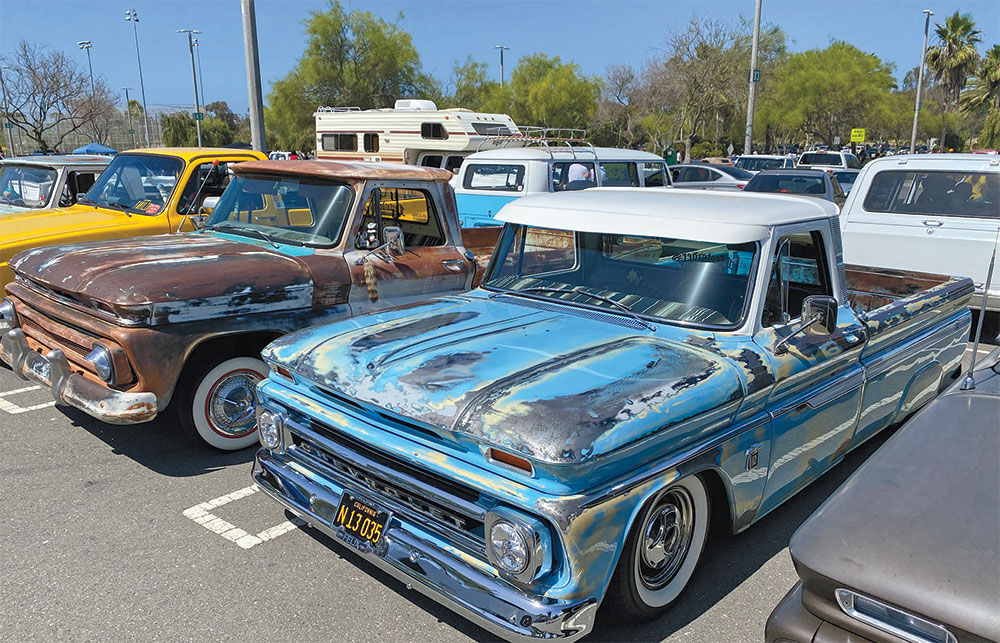
Really Fauxtina
s long as I can remember (lately that isn’t all that long), when I come across an old paintjob—you know the look—the patina appearance speaks volumes about the age of the truck. It gives a peek into its age measured in decades, quality of life, and whether or not the owner had given it proper care and attention. A patina-“dressed” truck is its “badge of courage” and I can remember staring at one dent, scratch, chip, or any other of its life’s accumulation trying to imagine what it must have been used for or what chore it accomplished on this day to gather such an adornment.
There was a time when a truck’s patina depicted its previous life but nowadays a patina-appearing truck could very easily be a brand-new build or a massaged, not-so-old redo, in which case the patina is less patina and more “fauxtina.” Yes fauxtina, which is the taking of a sheetmetal body and giving it the appearance of years or decades of use and/or abuse. However, when reality sets in, neither its years nor decades speak truly but rather it’s a “fresh” paintjob made to look the part of an accumulation of years and decades of use.
There was a time when a patina paintjob spoke about the image the truck brought to its owner. Nowadays, it’s possible for the owner to bring the history to the truck. Real patina or the use of fauxtina can mean one of several things. There is no denying keeping a truck’s patina around can mean a large chunk of savings of the budget to use elsewhere. All of us understand that body- and paintwork may very well be the single most expensive aspect of any build, ground up or otherwise. We build our projects with an image in mind but oftentimes budget has plenty to say.
“What is the look I’m after?”
“What do I want this build to say about itself or me?”
One additional fact is today’s fauxtina paintjobs can be based on trucks with tired paint, or freshly applied; the end result is truly impressive. I find myself walking up to the patina, or fauxtina, painted truck and staring, and when no one is looking touching (aghast!), to see if I can tell whether it is years of service or paint made to the look the part. Many times, I am impressed at the effort placed into making a new paintjob look the part of an old or tired paintjob.
Recently I was wandering the aisles of hot rods, both car and truck, parked at a local Sunday gathering when I came across a number of pickups from an assortment of truck clubs … most of which were based on the venerable Chevy C10. And there were a pair of C10s parked side by side sporting patina worthy of any vehicle from the ’60s. Upon closer examination I did chuckle a bit as the two pickups were both sporting excellent examples of fauxtina. While true these weren’t well-preserved examples of aging paint but rather freshly applied paint, they were done up in a fashion so well as to have one marvel at the craftsmanship in making these new paintjobs look the part of decades of abuse.
Don’t get me wrong, I still appreciate the many hours required to prep a body for primer and the many more hours required to prep for paint. A beautiful paintjob is just that … a beautiful paintjob. But I, for one, have to marvel at the amount of effort in a truly well done—and not overdone—fauxtina paint. Long live patina and its related fauxtina. A well-done paintjob clearly can come in many versions.
